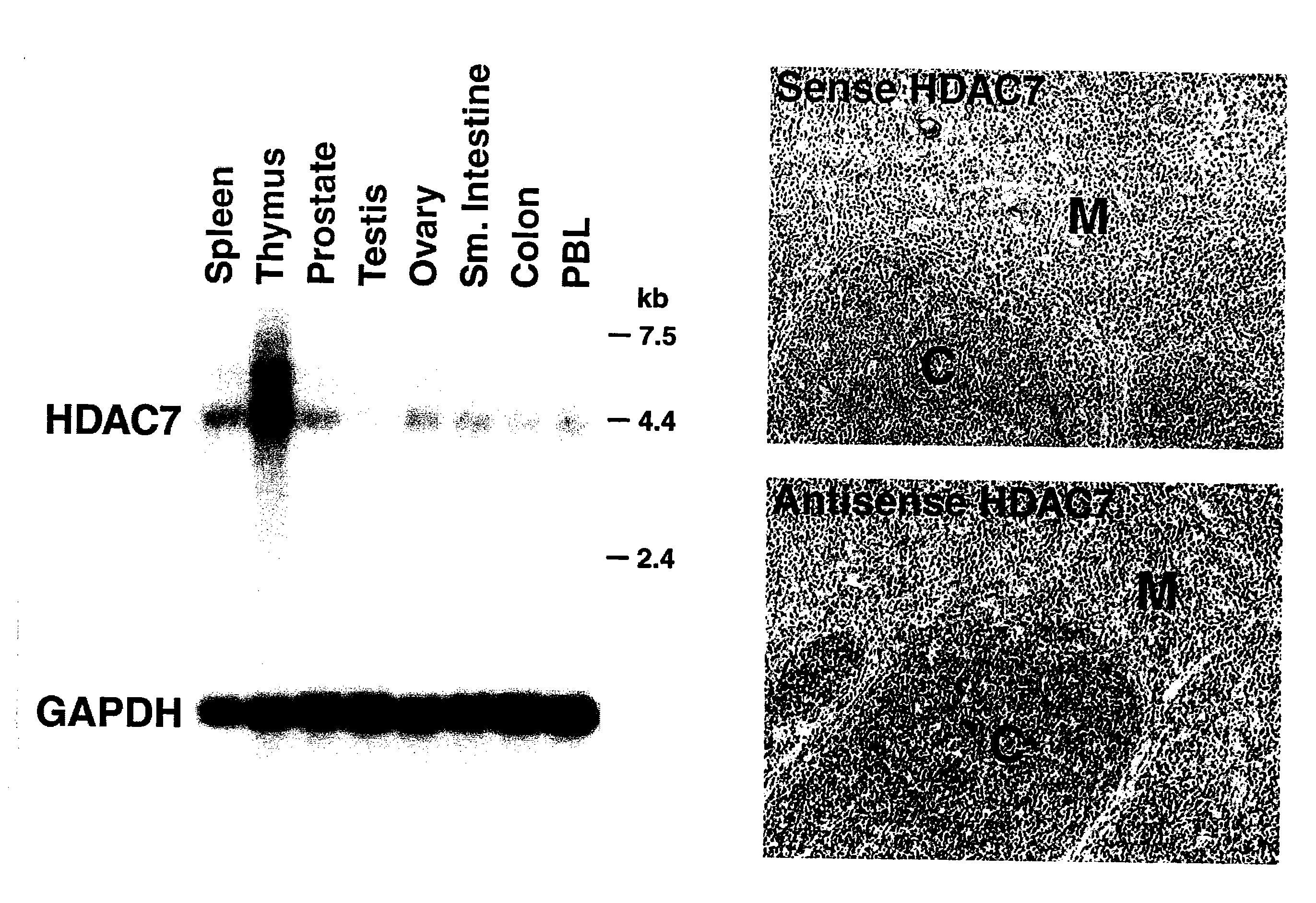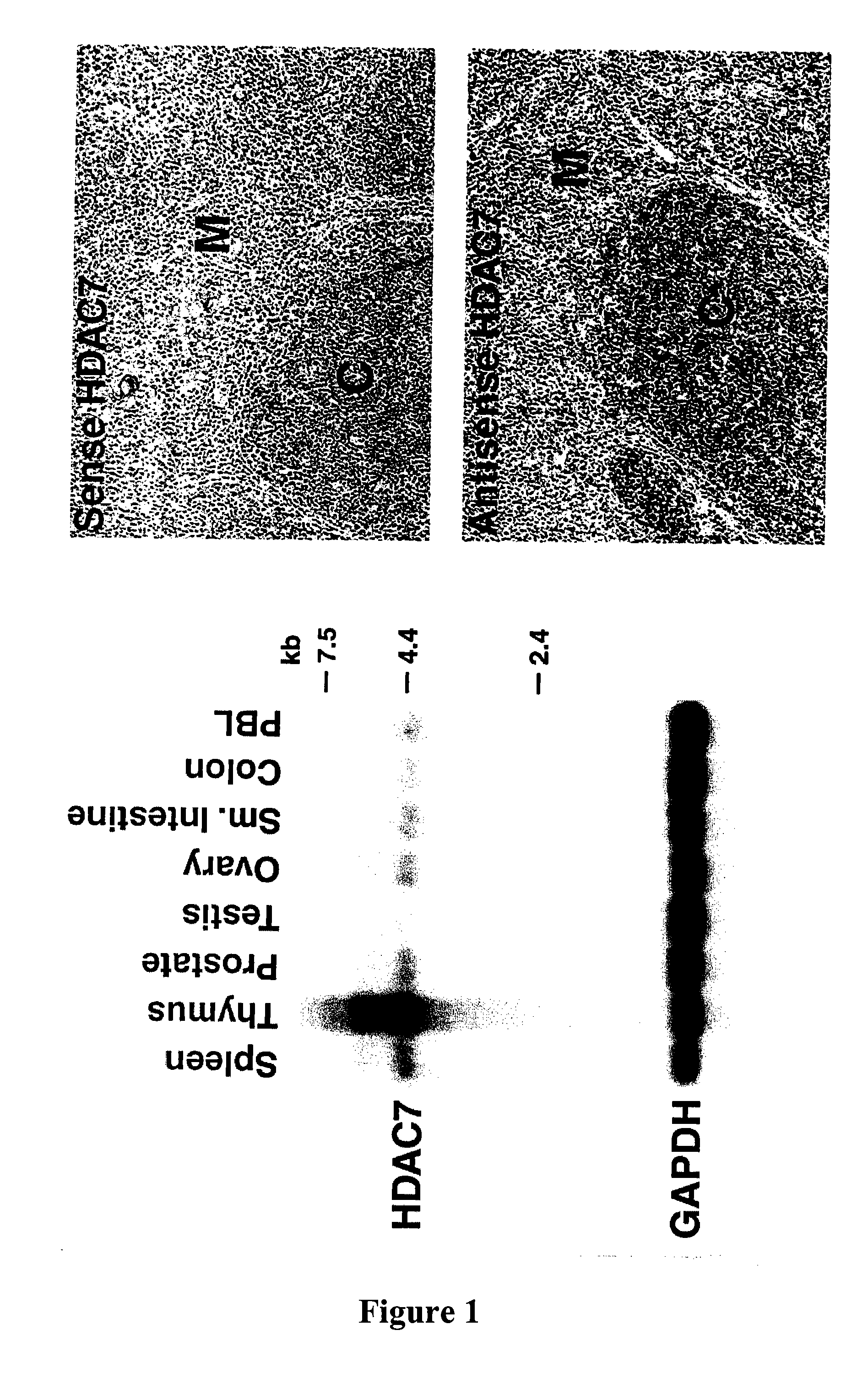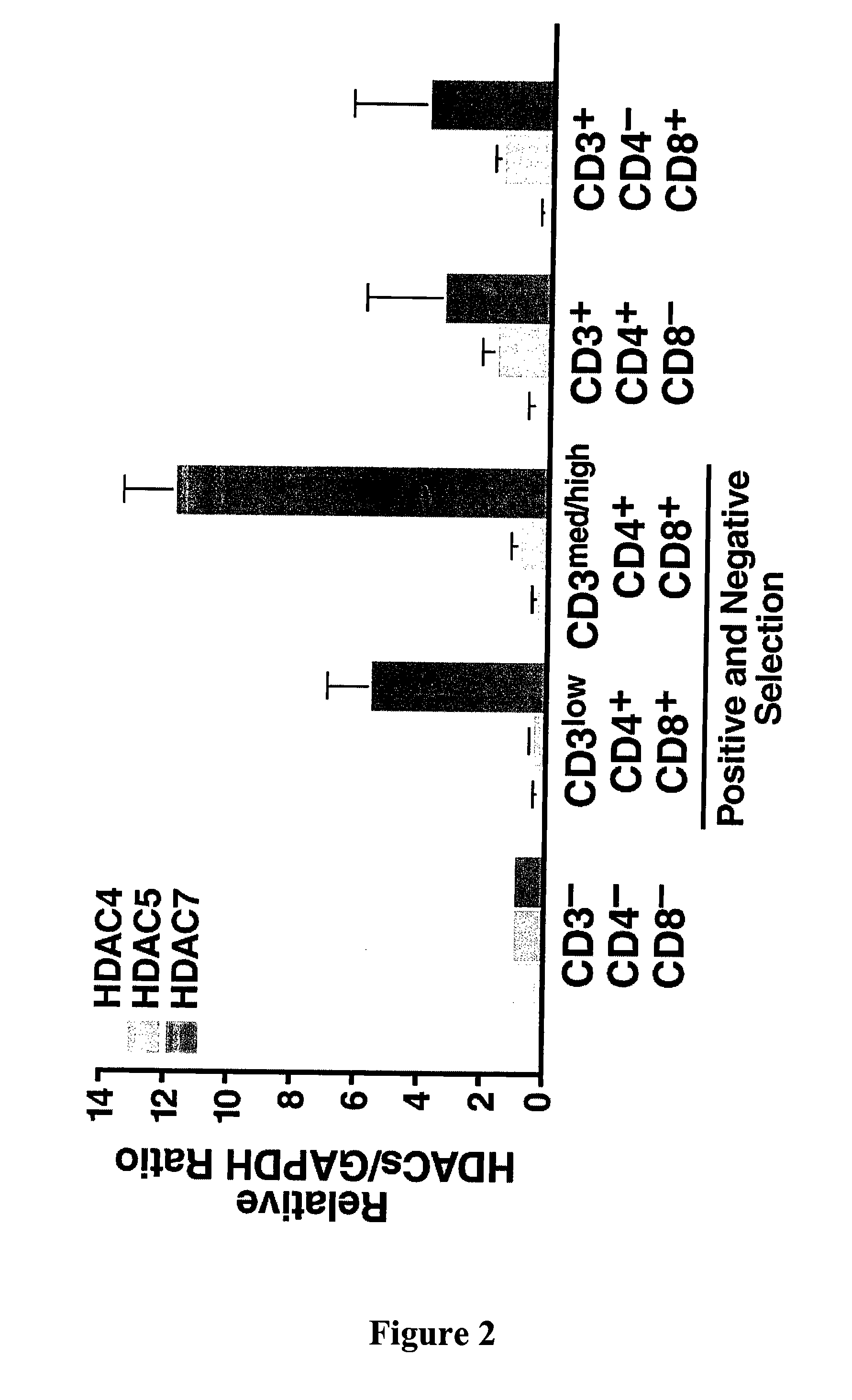Dephosphorylation of HDAC7 By Myosin Phosphatase
a myosin phosphatase and hdac7 technology, applied in the field of dephosphorylation of hdac7 by myosin phosphatase, can solve the problems of myosin phosphatase in other cellular systems, most of these interactions have not been examined in biological contexts, etc., and achieve the effect of preventing cardiac hypertrophy and preventing cardiac hypertrophy
- Summary
- Abstract
- Description
- Claims
- Application Information
AI Technical Summary
Problems solved by technology
Method used
Image
Examples
example 1
General Methods
[0282]A. Cell Culture and Cell Treatment
[0283]DO11.10 T-cell hybridoma was grown at 37° C. in RPMI 1640 and Dulbecco's modified Eagles medium supplemented with 10% fetal bovine serum, 2 mM glutamine, and 50 U / ml streptomycin / penicillin. DO11.10 cells stably expressing either empty vector, HDAC7-Flag, or HDAC7ΔP-Flag have been described (Dequiedt et al., 2003, Immunity 18:687-698). Mouse primary thymocytes were obtained from 4-6-wk-old Balb / c mice. Where indicated, PMA was added at a concentration of 10 ng / ml, unless indicated otherwise. For CD3 stimulation, tissue culture plates were coated with an anti CD3 antibody (500A2) at a 1:1000 dilution in PBS overnight at 4° C.
[0284]B. Cell Transfection Assays
[0285]Nucleofection of DO11.10 cells was conducted using Nucleofector Kit R and program O28. Cells were split to 300,000 / ml 24 hours before Amaxa nucleofection. Cells (5×106) were spun at 1000 rpm for 10 minutes at room temperature, resuspended in 100 μl of solution R, a...
example 2
Expression and Function of HDAC7
[0328]Northern analysis revealed that HDAC7 is highly expressed in the thymus (FIG. 1). In situ hybridization further revealed that HDAC7 was expressed in cortical lymphocytes within the thymus (FIG. 1).
[0329]Separation of thymic lymphocytes based on CD3, CD4 and CD8 by FACS showed that HDAC7 is present at highest levels in the double positive, CD4 and CD8 thymocytes, and that its expression significantly decreases in single positives, CD4 and CD8 thymocytes (FIG. 2). These observations suggested a possible role of HDAC7 in the process of positive or negative selection. In resting double positive thymocytes, HDAC7 is a predominantly nuclear protein where it represses its target genes.
[0330]Applicants observed that activation of thymocytes via their T cell receptor rapidly leads to the phosphorylation of three residues in the N-terminal domain of HDAC7, to the recognition of these phosphorylated residues by 14-3-3 adaptor proteins and to the nuclear-cy...
example 3
Identification of Genes Regulated by HDAC7
[0331]To identify the genes that are regulated by HDAC7, two new mutated versions of HDAC7 were generated. The first construct transformed HDAC7 from a repressor to an activator. In this construct, the catalytic deacetylase domain of HDAC7, which functions as a repressor, was substituted by the VP16 transactivating domain. This substitution should transform HDAC7 from a repressor to a transcriptional activator. By profiling gene expression in cells expressing this HDAC7-VP16 construct in comparison to cells expressing wild type HDAC7 protein, primary and secondary targets of HDAC7 were identified. A typical example of a microarray is shown in FIG. 3 with a single gene lighting up in response to HDAC7-VP16.
[0332]The second construct attempted to block the nucleocytoplasmic shuttling of HDAC7. As shown by Applicants, HDAC7 becomes phosphorylated after TCR activation, leading to its nucleocytoplasmic shuttling. TCR activation also lead to the r...
PUM
| Property | Measurement | Unit |
|---|---|---|
| Tm | aaaaa | aaaaa |
| structure | aaaaa | aaaaa |
| domain structure | aaaaa | aaaaa |
Abstract
Description
Claims
Application Information
 Login to View More
Login to View More - R&D
- Intellectual Property
- Life Sciences
- Materials
- Tech Scout
- Unparalleled Data Quality
- Higher Quality Content
- 60% Fewer Hallucinations
Browse by: Latest US Patents, China's latest patents, Technical Efficacy Thesaurus, Application Domain, Technology Topic, Popular Technical Reports.
© 2025 PatSnap. All rights reserved.Legal|Privacy policy|Modern Slavery Act Transparency Statement|Sitemap|About US| Contact US: help@patsnap.com



